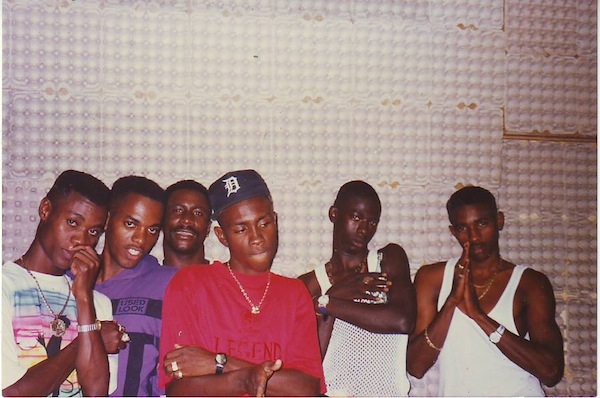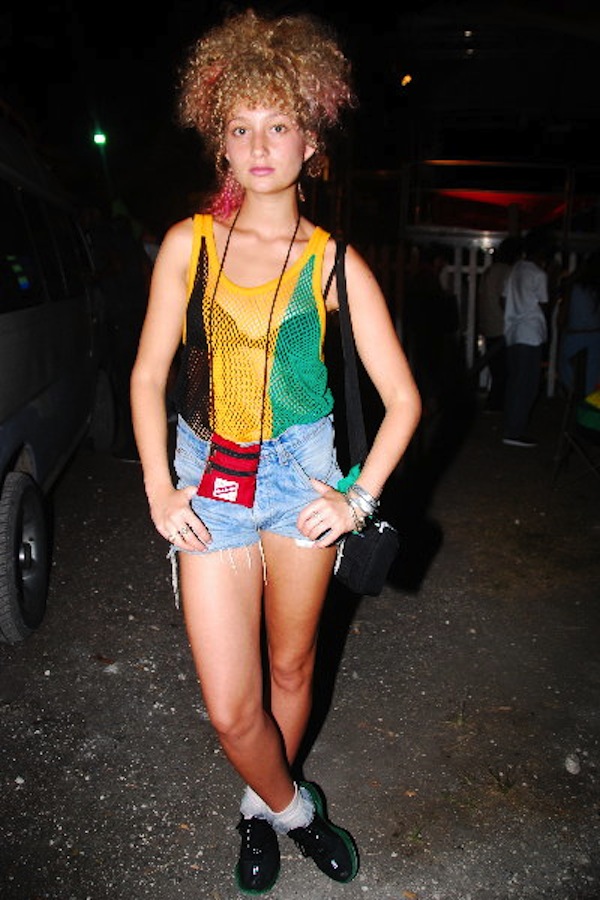
Chronixx wears a marina (under his life vest) for a nautical scene in Protoje’s “Who Knows” video. Photo: Yannick Reid.
“Bumaye” and “Diamond Sox” video director Jay Will clarifies its double usage. “There are still people nowadays that it’s a utility and it’s based on the lifestyle and the demographic of the person: a downtown, old school type of big man or rasta man ting. It’s not about the style for them its more of a way of life.” This explains that the trend is distinguished by the movements of Jamaica’s youth culture. Jay Will continues, “When somebody actually sees a young person dress like this it’s considered a style because they’re thinking that’s no longer how we dress anymore. But there are still some people who have not been affected by or influenced by the outside culture and stayed true to that culture through the years.”
A broader affection for retro style is behind the recent influx of mesh marinas in reggae/dancehall videos. In their “Who Knows” video, Protoje and Chronixx tell a visual story as they travel cross country, shedding garments as they go, eventually pairing down to mesh marinas. Notis and Iba Mahr’s “Diamond Sox” song is an ode to the old school, as is Aidonia’s “80s Dancehall Style.” Director Jay Will played with the style in his video for “Street Bullies Medley” in 2010, the same year director Storm Saulter’s politically fueled seventies era film Better Mus Come debuted in Jamaica with a few mesh marinas speckled here and there. In “Street Bullies Medley,” Shaggy can be seen evoking the ‘80s rude boy style referenced in Iba Mahr’s song: white mesh marina, diamond socks, Arrow shirt and slacks. “We used mesh marinas to capture that rude boy spin,” says Jay Will of the video’s style inspiration. “Man would a roll up, a newspaper in his back pocket, button his top button and leave everything else open and just have his mesh marina. But inside his newspaper would be his knife. That was just a type of dressing that was referred to as Spanglers [as in the infamous posse].”










